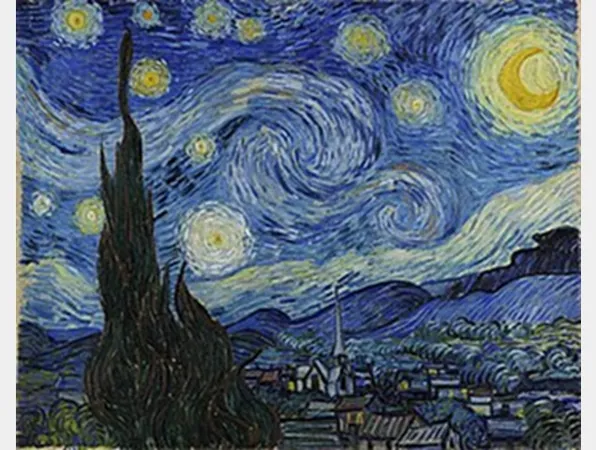
Unlocking Van Gogh's Secrets: Physicists Discover Exotic Vortex Patterns in Quantum Fluids
2025-08-16
Author: Wei Ling
Revolutionary Discovery in Quantum Physics
In an astonishing breakthrough, physicists from Osaka Metropolitan University and the Korea Advanced Institute of Science and Technology have captured the elusive quantum Kelvin–Helmholtz instability (KHI) for the first time ever. This groundbreaking phenomenon, long predicted but never witnessed in quantum fluids, generates mesmerizing vortex patterns reminiscent of the moon illuminated in Van Gogh's iconic painting, 'Starry Night'.
The Art of Quantum Fluids
KHI is a well-known occurrence in fluid dynamics, evident in various natural phenomena like undulating ocean waves and swirling clouds. "It all started with one simple question: Can KHI manifest in quantum fluids?" says Hiromitsu Takeuchi, an associate professor involved in the research.
Quantum Experimentation at Absolute Zero
To unearth these mysteries, the team cooled lithium gases near absolute zero to create a unique Bose–Einstein condensate—a superfluid where two streams flow at different velocities. Astonishingly, at their interface, a wavy pattern emerged, akin to classical turbulence, further evolving into quantum vortices.
Introducing Eccentric Fractional Skyrmions
Among these vortices were eccentric fractional skyrmions (EFSs)—a newly identified type of topological defect. Unlike classical skyrmions, which are typically symmetrical, EFSs boast a crescent shape replete with embedded singularities, creating sharp distortions in the spin structure.
Art Meets Science: A Celestial Connection
Takeuchi intriguingly notes, "The large crescent moon in the upper right corner of 'The Starry Night' strikingly resembles an EFS." This artistic connection adds a layer of beauty to the scientific discovery.
Implications for Spintronics and Beyond
Skyrmions have already garnered attention for their potential in spintronics and storage devices due to their remarkable stability and unique dynamics. The identification of EFSs could lead to innovations in technology and deepen our understanding of quantum mechanics.
Charting Future Research
The researchers are eager to refine their findings further. Takeuchi mentions, "With more precise measurements, we may be able to validate 19th-century predictions concerning interface waves driven by KHI." Moreover, the discovery of EFSs invites a plethora of theoretical inquiries regarding their nature across various multi-component and higher-dimensional systems.



 Brasil (PT)
Brasil (PT)
 Canada (EN)
Canada (EN)
 Chile (ES)
Chile (ES)
 Česko (CS)
Česko (CS)
 대한민국 (KO)
대한민국 (KO)
 España (ES)
España (ES)
 France (FR)
France (FR)
 Hong Kong (EN)
Hong Kong (EN)
 Italia (IT)
Italia (IT)
 日本 (JA)
日本 (JA)
 Magyarország (HU)
Magyarország (HU)
 Norge (NO)
Norge (NO)
 Polska (PL)
Polska (PL)
 Schweiz (DE)
Schweiz (DE)
 Singapore (EN)
Singapore (EN)
 Sverige (SV)
Sverige (SV)
 Suomi (FI)
Suomi (FI)
 Türkiye (TR)
Türkiye (TR)
 الإمارات العربية المتحدة (AR)
الإمارات العربية المتحدة (AR)